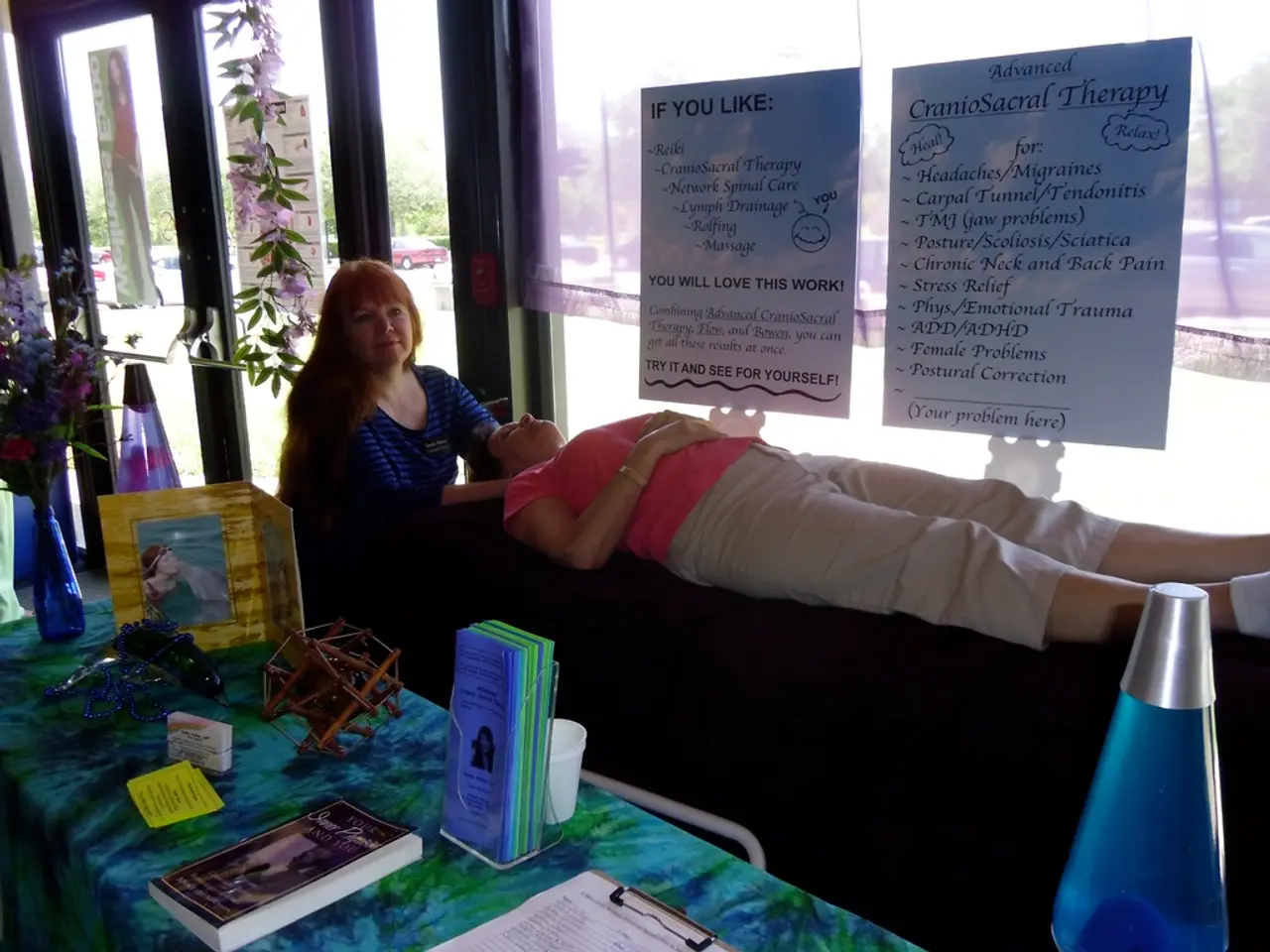Exploring the Five Fundamental Expressions of Love: Facilitating Healing of Childhood Traumas Through Connection
==============================================================
Supportive acts and the understanding of the 5 love languages can play a significant role in healing childhood trauma. These research-based strategies, adapted with trauma-informed principles, focus on fostering safety, trust, and attunement to the survivor's needs.
Words of Affirmation
Positive, encouraging language can counteract the harsh inner criticism common in trauma survivors. Speaking kind, validating words helps repair self-esteem and reframe negative beliefs shaped by trauma. Affirmations activate the brain's reward pathways, fostering emotional regulation and resilience.
Acts of Service
Demonstrating love through helpful actions creates a tangible sense of safety and support. For trauma survivors, practical acts signal reliability and care without requiring words, which can be grounding and nurturing when consistency is maintained.
Receiving Gifts
Thoughtful gifts serve as symbolic reminders of being seen and valued. The focus is on the intention and meaning behind the gift rather than materialism, reinforcing feelings of worthiness that trauma can erode.
Quality Time
Undivided attention in a safe, distraction-free setting fosters deep connection essential for trauma healing. Quality time helps rebuild relational bonds damaged by early abuse or neglect, emphasizing presence and shared experience.
Physical Touch
Trauma-informed approaches prioritize consent, safety, and gradual reintroduction of touch to support regulation of the nervous system. This can be deeply healing but also triggering for trauma survivors.
A trauma-informed framework underpins all these strategies, emphasizing the establishment of emotional and physical safety, building trust slowly through consistent, reliable actions, collaboration and choice, and witnessing and validation of the survivor's experiences.
Gifts, acts of service, quality time, words of affirmation, and physical touch, when adapted with trauma sensitivity and combined with supportive relational practices, become powerful tools for healing childhood trauma by nurturing a sense of safety, connection, and self-worth.
Identifying your love language allows you to communicate your needs effectively, fostering reliable supportive and affirming dialogue, which can restore trust and create a safe haven in relationships. Oxytocin, the "cuddle hormone," is released during physical touch and helps cement bonds and trust.
Taking concrete steps can be the superglue of trust, proving reliability and intent. Sharing love languages with your partner, friends, and family fosters empathy and strong bonds, while observing someone's needs and intervening fosters empathy and dialogue.
Supportive acts can strengthen marital satisfaction, and shared experiences during quality time can strengthen emotional connections and emotional understanding. Seeking professional support can facilitate exploring traumas and new strategies for healing. Childhood trauma can lead to emotional dysregulation, causing impulsive emotions, and relational patterns in adult life can be rooted in childhood schemas.
However, it's important to remember that healing is a personal journey, and what works for one may not work for another. It's crucial to approach healing with patience, understanding, and self-compassion.
References: - Healing Through Touch - Integrate Love Languages for Healing - Healing through Time - Healing through Gifts
- By understanding mental health and the science behind the 5 love languages, we can foster empathy and strong bonds in our relationships, which can be particularly beneficial in healing childhood trauma.
- Implementing therapies and treatments that incorporate these love languages can strengthen emotional connections, emotional understanding, and marital satisfaction, promoting mental health and wellness.
- In a family setting, identifying each member's love language can help improve communication, foster reliable supportive and affirming dialogue, and build trust, contributing to positive family dynamics.
- As we engage in acts of love, such as words of affirmation, acts of service, receiving gifts, quality time, and physical touch, we can help rebuild relationships and promote mental health, healing, and overall well-being.




